Every garden needs and deserves at least one piece of sculpture. Sculpture, especially when it’s large, reinforces a sense of place, forges a relationship between garden and architecture and reinforces a garden’s theme like nothing else can. Depending on the piece you choose, sculpture can require an investment, but your garden and your visitors will thank you. Let’s look at some of the benefits of incorporating sculpture into your garden and see some gardens that have done it well.

Margie Grace - Grace Design Associates
1. Reinforce the sense of place. Each space has a story to tell. Sculpture can help the garden express its unique sense of place. Nothing says California coast like windswept pines. This Santa Barbara garden features a sculpture that speaks to that by mimicking those pines in a contemporary way. Its dimensions make a bold statement that grounds the space and ensures that this garden will not be forgotten easily.
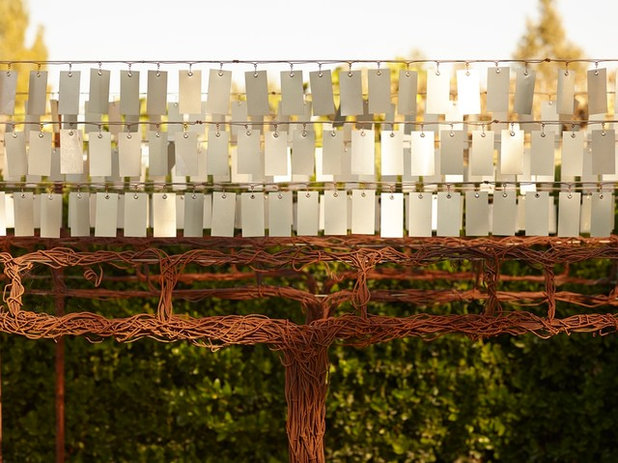
S.Biaggi/sculptural landscapes
This piece, in Sonoma, California, is part of a larger installation that offers a creative and contemporary take on a vineyard. With its gnarled fabricated vine and reflective pieces that mimic fruit, the artist is connecting with the history, industry and ecology of the environment.
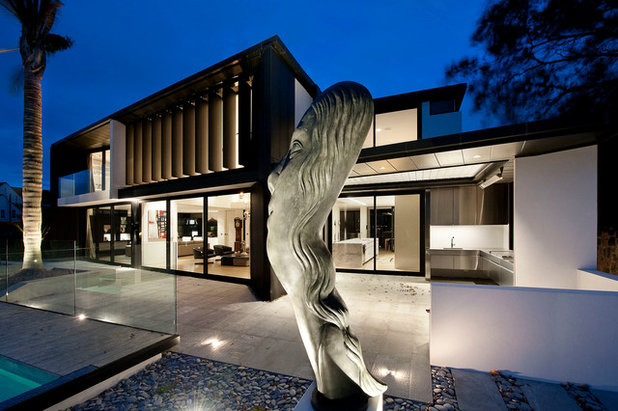
Daniel Marshall Architect
2. Forge a relationship between garden and architecture. Appropriately chosen sculpture can solidify the relationship between a house and its lot, as opposed to the house looking like it simply appeared or landed there. This sculpture both contrasts with and complements this home in New Zealand. The vertical lines of the figure’s hair repeat the vertical lines on the home, while the sculpture’s rounded, more organic shape contrasts with the rectilinear dwelling. Additionally, the sculpture repeats the color of the patio and building.
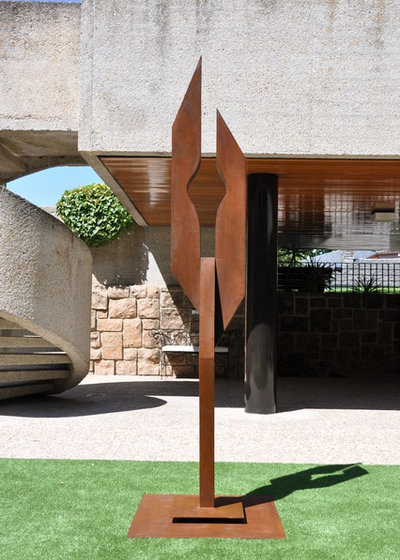
GONZALO DE SALAS
This Cor-Ten steel sculpture near a home in Madrid repeats the coloration of the wood architectural accents. Its height reinforces prominent elements of the home while its curves forge a relationship with the stairwell.
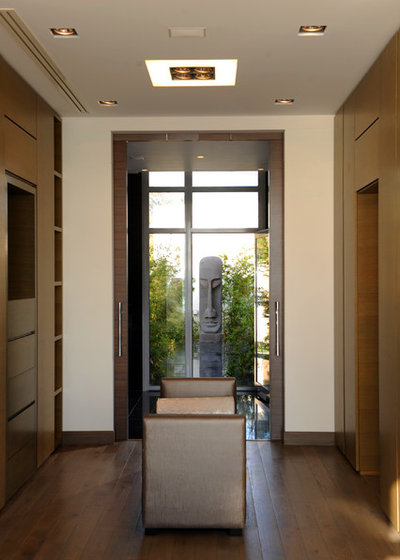 3. Create an indoor-outdoor connection.
3. Create an indoor-outdoor connection. Many people crave a seamless connection between indoors and out in their personal spaces. Accomplish this by placing a sculptural piece on a long axis with a prominent window or directly in front of a window or door, as seen in this Saudi Arabian home. Make sure the sculpture matches the home’s scale, architectural features and interior furnishings.
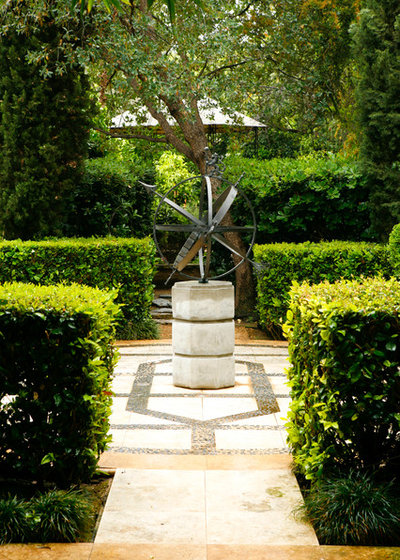
EPT DESIGN
4. Reinforce your garden’s theme. This traditional garden in Los Angeles features a steel armillary. Armillary spheres date back to ancient Greek and Chinese scholars and have been used in European gardens for hundreds of years.
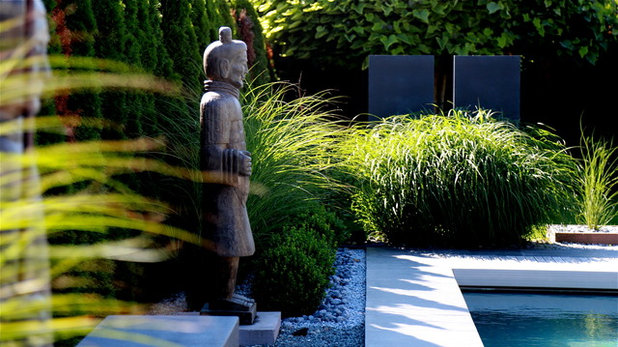
Art bor concept
A Chinese- or Japanese-inspired sculpture can add that feeling of Zen that draws so many of us. The strong lines of the sculpture seen here command attention and reverence as it regally presides over this French garden. The vertical hedge and architectural elements reinforce the prominence of the piece.
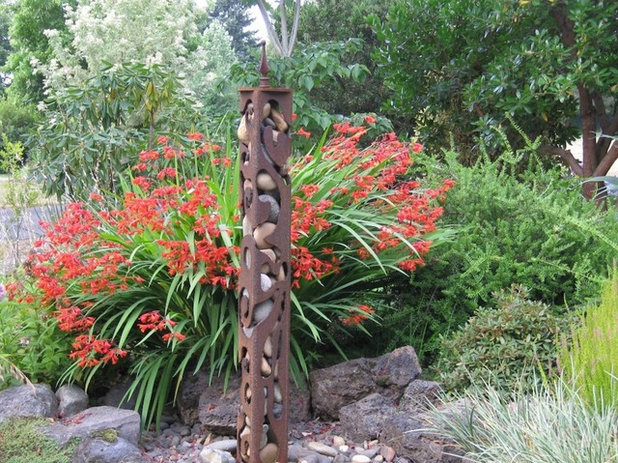
Winterbloom
5. Heighten your appreciation of nature. By bringing the ordinary to light in new and unexpected ways, sculpture can rekindle our appreciation of nature. The rusted steel sculpture seen here holds ordinary river rocks like those in the dry creek bed at its base. This piece helps us appreciate the organic, sensual shape of these ordinary stones.

SPW Ironworks
By amplifying the size and embellishing the body of an ordinary insect, this piece causes us to remember the fragile beauty of the ecosystem. The sculptural insect measures 30 inches in width and isn’t easily forgotten by those who visit this space.
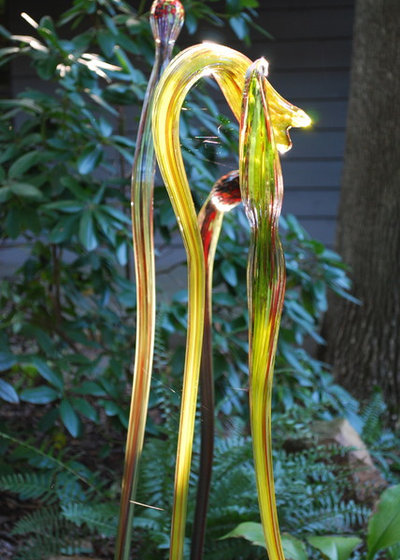
Jay Sifford Garden Design
6. Heighten your awareness of everyday subtleties. Gardeners and artists see light in a way that few others do. Seasonal changes in the sun’s intensity and position go unnoticed by most of us. This installation of blown glass captures, reflects and refracts light in a way that heightens our awareness of it.
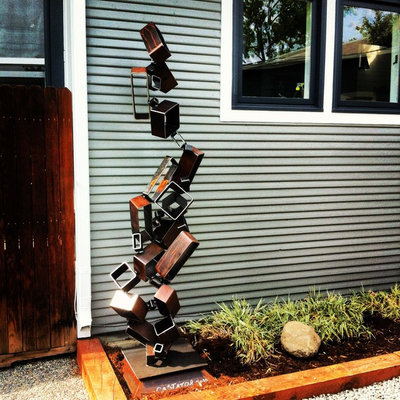
Metal Boy, Inc.
How many of us routinely stop to think about gravity? Yet without it, we would not exist. This metal piece functions as an ongoing reminder of those things we take for granted.
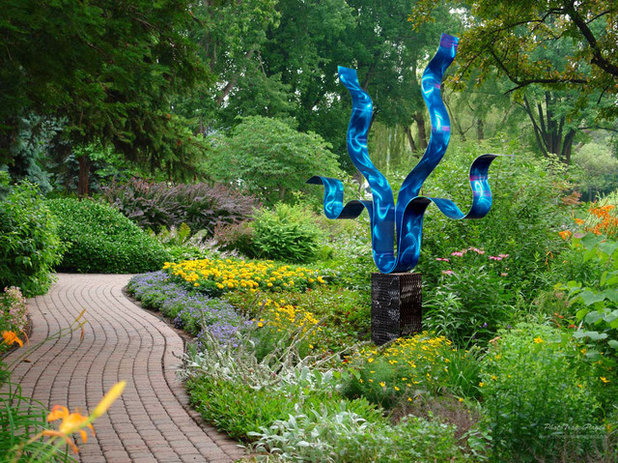
Statements2000
7. Center the eye. A well-designed garden helps its visitors process the space by directing the eye to a place in the garden that is particularly special. Even more important, an eye-catching piece of art can draw the eye from an undesirable view, such as the side of a neighbor’s garage. To command this attention, you will need to purchase a piece with large scale and mass, such as the one shown here.
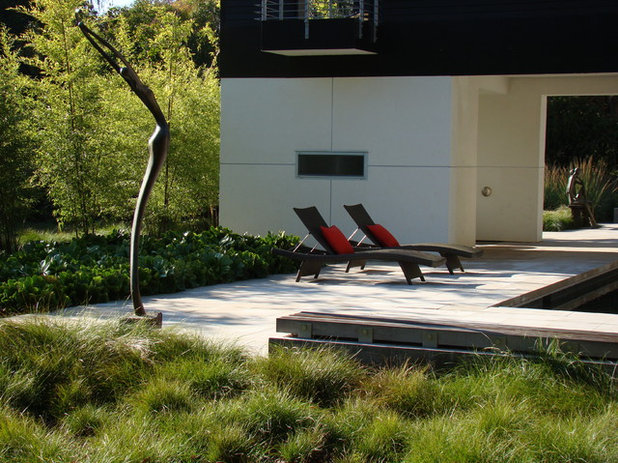
Randy Thueme Design Inc. - Landscape Architecture
8. Define the purpose of a space. If your space is fairly large and divided into different areas or “rooms,” you may want to consider a sculpture that defines the purpose of each room. Again, by doing this you are helping the visitor easily process the space.
The figure shown here appears to be stretching after awakening from an afternoon nap. The lounging chairs nearby are precisely for that purpose. Notice that the lines of the well-placed sculpture repeat the shape of the chairs.
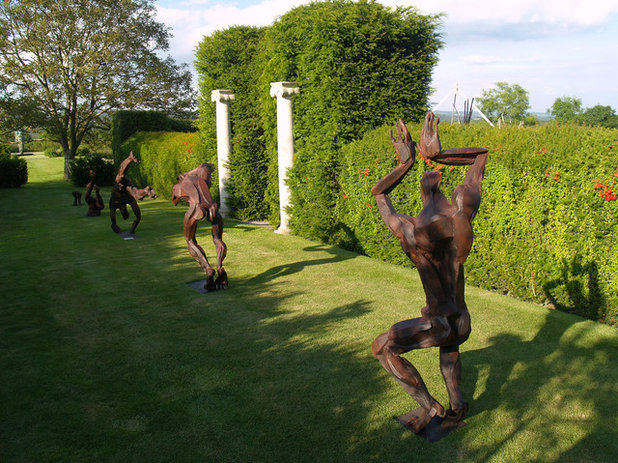
Taylor Tripp | Landscape Design
A lawn can provide a spot for sports or games. This series of whimsical sculptures indicates that this space is for having fun, playing games and exercising.
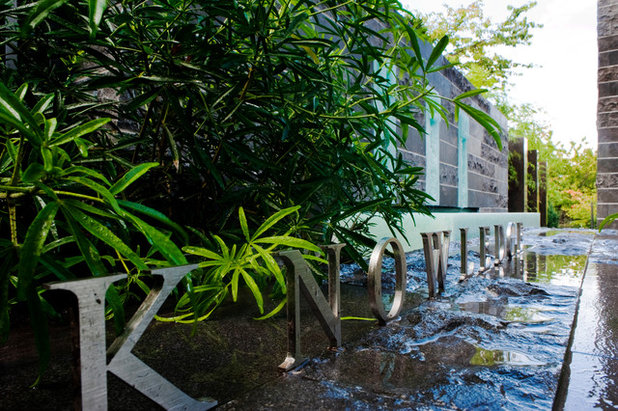
Paul Sangha Landscape Architecture
9. Make yourself think. Include a sculptural piece that initiates deep thought. The scale of this piece forces its acknowledgment in a bold but simplistic way.

Rachel Horn Interiors
This whimsical series also elicits thought. Additionally, it brings a smile to the faces of those who view it.
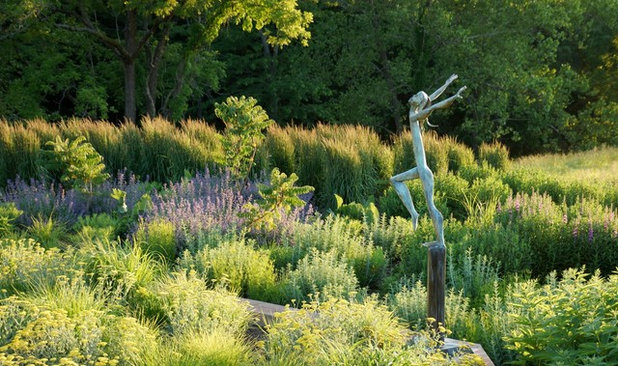
Adam Woodruff + Associates, Garden Artisans
10. Evoke emotion. A wide-open space in a garden can elicit feelings of euphoria, humility and freedom from care, because our perceived scale of ourselves is reduced in a large space. In a smaller space, we might experience feelings of safety and nurturing. The sculpture seen here is well-chosen and sited appropriately for the space. It makes the visitor feel light, carefree and happy.





